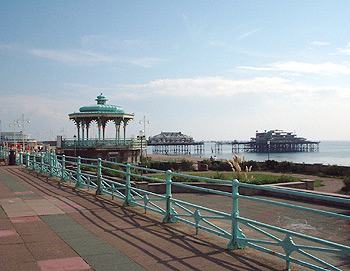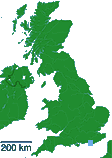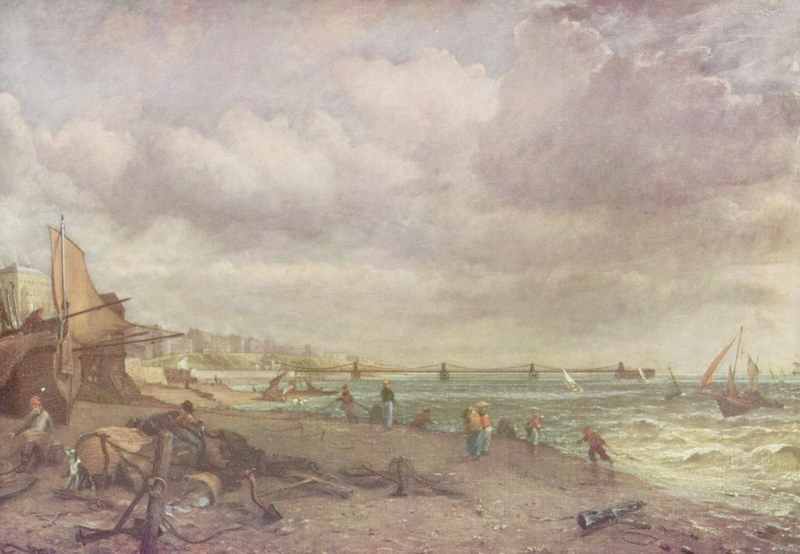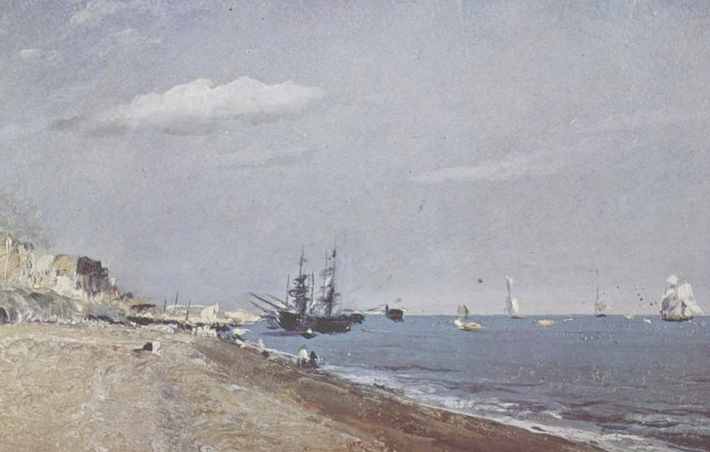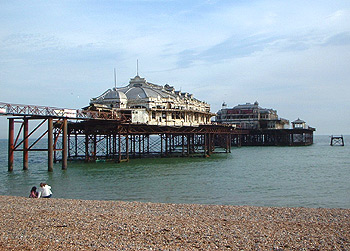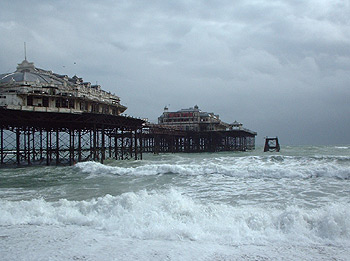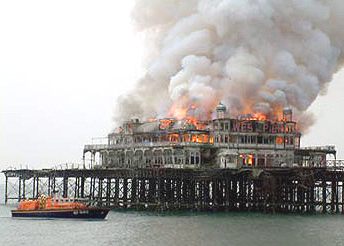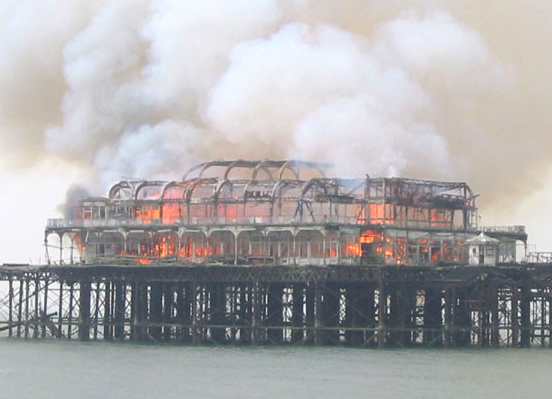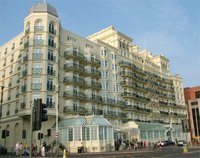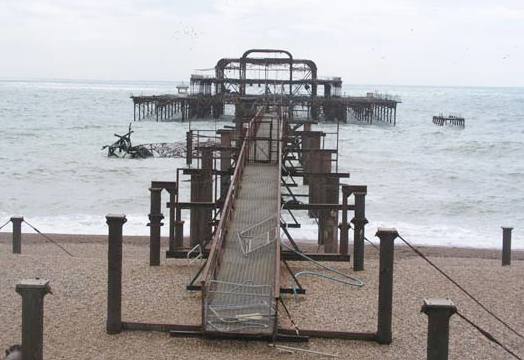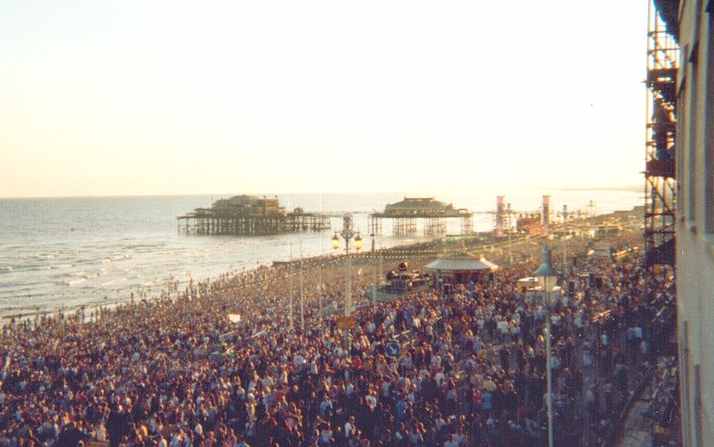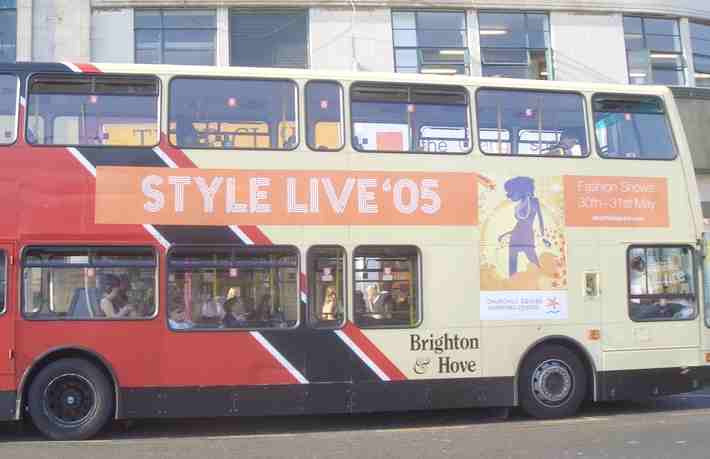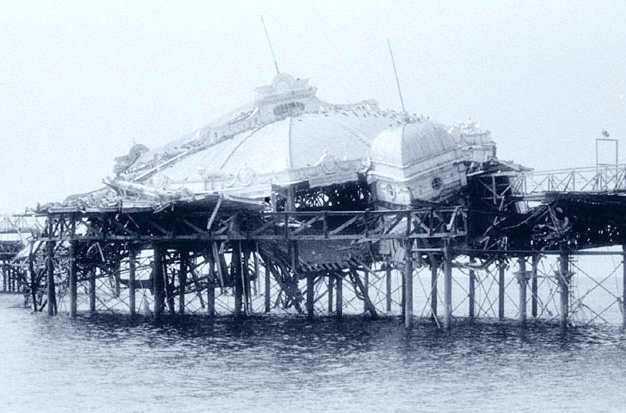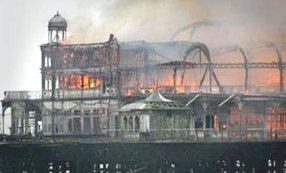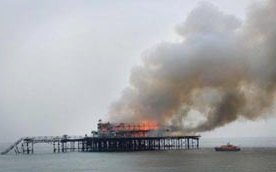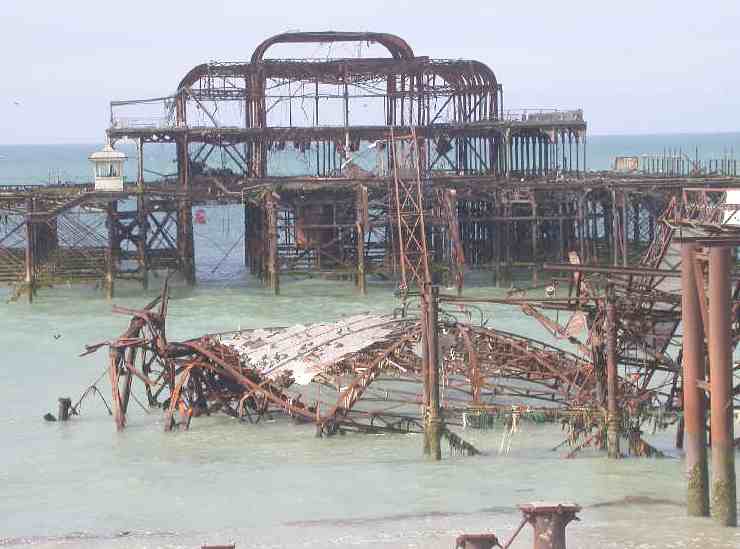|
BRIGHTON
|
||||||||||||||||||||||||||||||||||||||
|
They call Brighton "London-by-the-Sea", and the nickname describes the town perfectly. Brighton has a lot of the hustle and bustle of London, but with the advantage of not being landlocked. So when the stress of city life gets to too much for Londoners, they can hurl themselves into the English Channel - or simply hang out at the beach and relax, which is the Brightonian thing to do.
Brighton on the south Sussex coast of England is one of the largest and most famous seaside resorts in England. Brighton and Hove form a single conurbation. Brighton's lively atmosphere is a direct contrast to its near neighbour, Hove which has quieter and more refined character. The two boroughs were joined together to form the unitary authority of Brighton & Hove in 1997, which in 2000 was granted city status by the Queen as part of the millennial celebrations, following competition from other large towns which coveted city status.
Brighton promenade looking East to Pier
Although Brighton is by the sea, there is no sand and no rocks. The air on the beach rarely smells of anything other than fish and chips. One of the two piers is (was) a dilapidated Victorian confection closed off to all but the most daring starlings and seagulls; the other pier, with its arcade games, carnival rides and greasy food stalls, is a veritable emporium of all things loud, cheap and tacky. The "promenade" bit of the beach is lined with bars, clubs, cafes, chip shops and souvenir stalls, with the occasional art gallery tucked in for good measure. The town well is known for gale force winds
Early history
While any British history predating the first mentions by literate Romans is, by definition, consigned to an obscured landscape known intimidatingly as 'prehistory', a few things are known about the area. Whitehawk Camp — a natural viewpoint — is bisected by Manor Road. The centre of this early Neolithic causewayed enclosure c.3500BC is someway toward the aerial mast on the south side of Manor Road, opposite the grandstand. There are four concentric circles of ditches and mounds, broken or 'causewayed' in many places. Significant vestiges of the mounds remain and you can trace their arc with the eye.
The building of a new housing estate in the early nineties over the South Eastern portion of the enclosure resulted in damage to the archeology, the loss of the ancient panoramic view and a diminishment in atmosphere of the historical site. More of prehistoric Brighton and Hove can be observed just north of the small retail park on Old Shoreham Road, built over the site of the town's football ground in the late 1990's, where you can visit The Goldstone. There is a plaque telling us it was believed to be in use (ceremonial? geomantic?) around 2000BC. A standing stone circle nearby (today's Hove Park) is documented up to 1820, when the farmer had had one too many 'antiquarians' traipsing over his crop and buried the stones.
After a scholarly review, Paul Harwood of Birmingham's Institute of Archaeology & Antiquity noted that "there are a concentration of Beaker burials on the fringes of the central chalklands around Brighton, and a later cluster of Early and Middle Bronze Age ‘rich graves' in the same area."
The Chain Pier, Brighton, John Constable, 1824-1827
Of considerable interest from the middle Bronze Age is the Hove Amber Cup. During nineteenth century building work near Palmeira Square, workmen tasked with removing an earth mound 'excavated' a significant burial mound. A defining point on the landscape since at least 1500BC, this 20 foot high tomb yielded, amongst other treasures, the Hove Amber Cup. Made of translucent red Baltic Amber and approximately the same size as a regular china teacup, the impressive artefact can be seen in Hove Museum.
Undoubtedly the single most impressive pre-Roman site in Brighton is Hollingbury Camp. Commanding panoramic views over Brighton, this Celtic Iron Age encampment is circumscribed by substantial earthwork outer walls. As a 'ball park figure', its diameter is about 300 meters. Hollingbury is one of numerous 'hillforts' found across southern Britain. Cissbury Ring, at a distance of about ten miles from Hollingbury and quite awesome in its construction, is reckoned by some to have been the tribal 'Capital'.
Having conquered Britannica (43AD), and after brutally surpressing the Boudicaen counter-invasion (61AD), the Romans built villas throughout Sussex and indeed there was a villa in Brighton. At the time of its construction in the late first or second century AD there was a river running along what is now the tarmac of London Road. The villa was sited more or less at the water's edge, immediately south of Preston Park — which area itself would perhaps have been part of the outer grounds. The villa was excavated in the 1930s prior to the building of a (now gone) garage on the site. Numerous artefacts were found as well as the foundations of the building. In the thirties, the garage owner had a small display of Roman statues and broaches in the forecourt shop.
The Anglo-Saxon Chronicle contains the first mention of a settlement in the area at Beorthelm's-tun (the town of Beorthelm). In the Domesday Book, Brighton was called Bristemestune and a rent of 4000 herring was established.
Beach and sailing ships in Brighton, John Constable, 1824
From the manorial system, Preston manor lingers on today as a museum. Although the present day manor house is relatively recent in construction, the church — St Peters, currently under the care of the Churches Conservation Trust — is fourteenth century. A medieval fresco depicting the murder of Thomas a Beckett was discovered under paint following a fire in the early part of the twentieth century. As such, it is among the oldest art in Brighton. In June 1514, the fishing village then known as Brighthelmstone was burnt to the ground by the French as part of a war between the two which began as a result of the Treaty of Westminster (1511). Later on in Henry's reign, the residents of the town petitioned the monarch for defensive cannon. Part of their 'pitch' was an illustrated map (1545) showing the French raid of 1511. A display copy of the map can be seen in Hove Museum.
18th and 19th century
Brighton remained a small fishing village up until the 18th century. Brighthelmstone began to change in 1753 when Dr Richard Russell of Lewes published his thesis on sea bathing, which proclaimed the benefit to health of the salt water of Brighton. He set up house there and before long, the rich and the sick had started to make their way to the seaside. Currently approaching the conclusion of its ambitious restoration, Marlborough House on the Steine was built by Robert Adam in 1765 and purchased shortly afterwards by the eponymous Duke. By 1780, development of the Regency terraces had started and the town quickly became the fashionable resort of Brighton.
The growth of the town was further encouraged when, in 1786, the young Prince Regent later King George IV, rented a farmhouse in order to escape from public life. Eventually he spent much of his leisure time in the town and constructed the exotic-looking Royal Pavilion, which is the town's best-known landmark. The Kemp Town estate (at the heart of the Kemptown district) was constructed between 1823 and 1855, and is a good example of Regency architecture. Visitors were further encouraged by the arrival of the London and Brighton Railway in 1840, which also established one of the first railway-owned locomotive works.
West Pier June 2002
The Piers
The Brighton Marine Palace and Pier, generally known as the Palace Pier before being officially renamed Brighton Pier in 2000, opened in May 1899 and is still popular. It suffered a large fire on 4 February 2003 but the damage was limited and most of the pier was able to reopen the next day. The Palace Pier, was renamed Brighton Pier in the hopes that everyone would forget Brighton actually has two piers and that this one is not the nicer of the two. That said, the Palace Pier is good for a laugh when people come to visit, and perhaps it's more true to the spirit of the English seaside in the 21st century
The older West Pier, built in 1866 by Eugenius Birch, has been closed and deteriorating since 1975, awaiting renovation. The West Pier is one of only two Grade 1 listed piers in the UK, the other being Clevedon Pier. Plans by The West Pier Trust to renovate the pier with help from Heritage Lottery Fund have been opposed by some local residents who claimed that the proposed new onshore structures — which the renovators needed to pay for the work on the pier — would obstruct their view of the sea. The restoration was also opposed by the owners of the Brighton Pier, who reportedly saw its subsidised rebuilding, were it to happen, as unfair competition.
I can remember when the West Pier was in a state of slow, picturesque decay. With its elaborate silhouette, ornate rooftops and peeling paint, it seemed to encapsulate the faded grandeur of all of Brighton. Decrepit as it was, it was still beautiful and intriguing when the sun glanced off of it.
Raging waves attack West Pier
The West Pier partially collapsed on December 29, 2002 when a walkway connecting the old concert hall and pavilion, partially collapsed and fell into the sea after being battered by the storms. On January 20, 2003 a further collapse saw the destruction of the concert hall in the middle of the pier. On March 28, 2003 the pavilion at the end of the pier caught fire. Firefighters were unable to save the building from destruction because of the precarious (ie: there wasn't one) state of the walkway. The cause of the fire remains unknown.
It is unfortunate that the waves eventually did succeed in doing just that (see picture below). It was painful to see the grand old pier slumping into the sea, but the damage really wasn't sufficient to write off the structure. The West Pier still managed to retain its strange, dilapidated charm, despite half of it looked like a collapsed wedding cake.
The worst, however, was yet to come. For on March 28, 2003, the West Pier caught fire. It was probably arson, but the culprits haven't yet been found. On May 12, 2003, another fire broke out, consuming most of what was left of the concert hall. Arson was suspected. The West Pier Trust refers to the fires as the work of 'professional arsonists', (notwithstanding that there is no evidence linking the fires to the owners of the Palace Pier). On June 23, 2004 high winds caused the middle of the pier to completely collapse.
Despite all these setbacks, the owner of the site West Pier Trust remained adamant they would soon begin full restoration work. Finally, in December 2004, the Trust admitted defeat, after their plans were rejected by the Heritage Lottery Fund and subsequent less ambitious plans to restore only the oldest, structural parts of the pier were also rejected by English Heritage. However, in September 2005 the Trust revealed in their newsletter that they are forming further plans to rebuild the original structure with help from private funding.
After the pavilion fire, the lovely old West Pier was just a charred skeleton. A vague outline of the building remained, but all of its dark corners and crumbling secrets have been burned away, leaving it blank and empty and just a diminished heap of metal scrap, no longer a faded beauty and more of an eyesore. Who knows, the Pier might have been a stunning attraction, had our heritage experts been more forthcoming and accorded the structure emergency status. Sadly, this is all too often the case.
Brighton west pier burning fiercely
The West Pier really came into its own when the weather was foul. Then it would rise up out of the frothy waves like some lonely leviathan, its dark eyes staring out at the green sea. The gloomy old pier loomed larger on stormy days. It's abandonment took on an eerie sadness with perhaps something more sinister lurking in the shadows.
When the sky was low and grey, the windows of the West Pier filled up with mysterious images and Victorian ghosts. One was mesmerised by the ever forceful waves clawing at the pier's supports, trying to bring it down into the churning water.
Brighton had one further major pier, the Brighton Chain Suspension Pier ("Chain Pier") of 1823. The pier was primarily intended as a landing stage, Brighton having no natural harbour, but it also featured a small number of attractions including initially a camera obscura. An esplanade with an entrance toll-booth controlled access to the pier which was roughly in line with today's New Steine.
The Chain Pier survived the construction of the West Pier, but a condition for permission to build the Palace Pier was that the builders would dismantle the oldest pier. They were saved this task by a storm which destroyed the already closed and rather decrepit pier on December 4, 1896. The stubby remains of some of the pier's iron piles, sunk ten feet into bedrock, can still be seen at the most extreme low tides.
Brighton west pier later in the day
IRA bombing
In the early hours of October 12th 1984 an IRA bomb exploded in the Grand Hotel where leading members of the governing Conservative Party were staying. Four people were killed in the blast (including Sir Anthony Berry), and another subsequently died of her injuries. The Prime Minister, Margaret Thatcher, narrowly escaped injury, although members of her Government were injured — most notably Norman Tebbit. However, no member of the cabinet was killed.
The Grand Hotel, on Brighton seafront in 2004, restored after the IRA bomb
Brighton today
In Brighton, the area occupied by the original fishing village has become The Lanes - a collection of narrow alleyways now filled with a mixture of antique shops, restaurants, bistros and pubs. That name was derived from 'Laine', which was apparently an old unit of Anglo-Saxon field measurement. The North Laine area still keeps the original spelling. The city has a large gay community, mainly based in the Kemptown area of the city. Every August sees a large annual Gay Pride event which has now become one of the most popular such events in the UK calendar.
The biggest arts festival in England—the Brighton Festival—takes place in May each year. Brighton is home to two universities, the University of Sussex and the University of Brighton, as well as a public school, Brighton College. It is sometimes known as ' by the Sea' because of its lively atmosphere and cosmopolitan nature and also because of the large number of visitors from London. In the summer, thousands of young students from all over Europe gather in the city to attend language courses.
Part of the beach has been designated an official nudist area — one of very few naturist beaches in the United Kingdom to be located adjacent to an urban area.
Charred remains of the once proud Brighton's west pier
Since the 1978 demolition of the Art Deco open-air swimming lido at Black Rock, the most easterly part of Brighton's seafront, the area has been developed considerably and now features one of Europe's largest marinas. However, the site of the pool itself remains empty except for a skate park and graffiti wall, and further development is planned for the area including a high-rise hotel which has aroused considerable local controversy, mirroring the situation with proposals for the site of the King Alfred leisure centre in neighbouring Hove.
Brighton is considered a fairly progressive town due to the large numbers of political movements and activities, for instance SchNEWS, a local newsletter. This has been demonstrated by the Green Party taking 22% of the vote of the Brighton Pavilion constituency in the 2005 general election, versus just 1% nationally.
July 17 02 Big Beach Boutique II pulled thousands fans for Fatboy Slim
Brighton nightlife
Brighton is renowned for its lively music scene, having spawned a number of successful bands in recent years, including Fatboy Slim, The Levellers, British Sea Power, The Eighties Matchbox B-Line Disaster, The Go! Team, The Kooks, The Love Gods, Johnny Truant, Electrelane and The Electric Soft Parade. Brighton is also fast becoming home of a thriving hardcore punk scene with bands such as The Permenant, Johnny Truant, and The Deepend making an impact at a national level. It boasts a number of record labels, including Skint Records, LOCA Records, Stompaphunk, Supercharged Music, Kayotix, Catskills, Tru Thoughts and others. A healthy free party scene has been in action since the early 90s.
There are a large number of bars and nightclubs in Brighton, though due to problems with binge-drinking, alcohol consumption on the street is now banned in some areas. Some of the most important clubs in the UK dance music scene are based in Brighton, including The Beach, Honey Club and The Ocean Rooms, and the now defunct Escape and Zap clubs. There are also a range of alternative venues including The Sussex Arts Club, the Concorde 2, the Freebutt and the Hanbury Ballroom.
Brighton is the home of Brighton & Hove Albion F.C. and the Hove ground of Sussex County Cricket Club. The cricket ground is one of only four in the UK with permanent lighting, and though not a test ground, is used for international one day matches.
Transport
Brighton & Hove Bus
Brighton railway station was built by the London & Brighton Railway in 1840, and in 1970 was saved from redevelopment. The station provides fast and frequent connections to London Gatwick Airport, London Victoria, London Bridge, and via the Thameslink line, King's Cross, London Luton Airport and Bedford.
Volk's Electric Railway, which runs along the beach, is claimed to be the world's oldest operating electric railway. Brighton & Hove Bus and Coach Company operates the local bus service with over 250 buses. The company started in the 1880s and has been owned by the Go-Ahead Group since 1993.
LINKS:
Notable Inhabitants
The West Pier concert hall collapse before the fire
Brighton in literature
Brighton in film
The West Pier on 24th June 2004, after the most recent collapse
WE ACCEPT NO RESPONSIBILITY FOR THE ACCURACY OF ANY FEATURED LINKS
| ||||||||||||||||||||||||||||||||||||||
|
IF YOU HAVE ANY GOOD STORIES TO TELL WE'D LIKE TO HEAR FROM YOU. WHY NOT BUILD A WEBSITE OF YOUR OWN TO TELL OF PROBLEMS IN YOUR AREA - IT'S YOUR RIGHT. WE WILL LINK TO YOUR SITE WITH A SHORT SUMMARY.
With thanks to Action Groups around the world for the supply of real case history and supporting documents.
|
||||||||||||||||||||||||||||||||||||||
